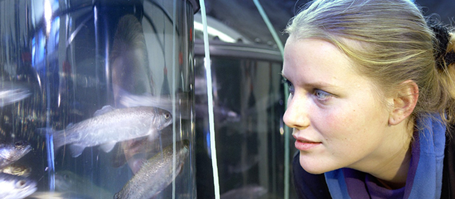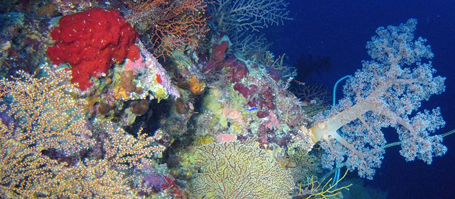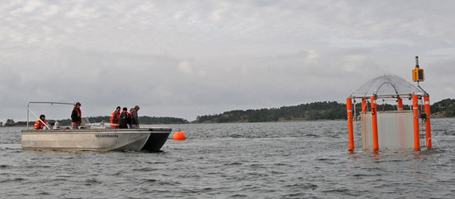The object of study: the turbot. Taking this upmarket noble fish as an example, the scientists want to make expensive yet sustainable and environmentally friendly method of breeding in closed production systems more efficient. Therefore they are closely examining every step along the production chain, from the very first life stages up to the marketing of the fish. The German Federal Ministry of Nutrition, Agriculture and Consumer Protection is funding the project of the Faculty of Agricultural and Nutritional Sciences and the Gesellschaft für Marine Aquakultur (GMA) with a total of 1.5 million Euro until 2015.
“In contrast to the use of open systems, we do not have nutrient outputs in recirculating aquaculture systems that pollute the ecosystems” says the project manager Professor Dr. Carsten Schulz from the Institute for Animal Breeding and Animal Husbandry at CAU. Because of the small amount of water required, these systems can be placed anywhere, for example in fish consumption hot spots. The largest problem with the recirculating systems is, however, the costly construction and operation. This is where the project comes in. The researchers’ are focussing on the genetic analysis of the fish to improve their breeding characteristics, the search for healthier feed and preventing the frequent aftertaste of fish bred in closed systems. Even a camera controlled automatic feeder is on this innovative project’s agenda. “A camera sensor is meant to capture the behaviour of the fish in order to perfectly adjust the feeding to the needs of the fish” say Professor Dr. Eberhard Hartung from the Institute of Agricultural Process Engineering. Thus excess feed can be reduced to a minimum which will lower costs and keep the water clean. The scientists are using GMA’s modern circulation systems in Büsum for their research.
This holistic approach also takes into account the marketing of the end product “fish”. How healthy is the turbot for our diet and which distribution channels are suitable for fish from recirculating systems? “The production and consumption of bred fish from aquaculture productions has increased significantly in the last ten years. We are hence asking how consumers have reacted to this trend and how merchants place the products price-wise” explains Jens-Peter Loy, Professor for Agricultural Economics at the CAU. A marketing strategy will be developed based on these findings.
“The project is another step in the direction of establishing a competency network in Kiel for aquaculture” says the vice president of the CAU, Professor Dr. Thomas Bosch. “The funding is at the same time recognition for the expertise of our research in this area and stimulus to end overfishing through the development of aquaculture.”
Aquaculture means the production of marine organisms in controlled conditions. Different production systems produce mainly fish, shellfish and plants for the food, cosmetics, pharmaceutical and pet food industry. Due to stagnating yields in fisheries und increased demand by the world’s growing population, 50 percent of the supply of fish will be provided by aquaculture by 2015.
Photo for download:
http://www.uni-kiel.de/download/pm/2012/2012-156-1.jpg
Contact:
Prof. Dr. Carsten Schulz
Christian-Albrechts-Universität zu Kiel
Institut für Tierzucht und Tierhaltung
Olshausenstraße 40
D-24098 Kiel
Tel.: 0431/880-5388
E-Mail: cschulz@tierzucht.uni-kiel.de
Christian-Albrechts-Universität zu Kiel
Presse und Kommunikation, Dr. Boris Pawlowski, Text: Denis Schimmelpfennig
E-Mail: presse@uv.uni-kiel.de, Internet: www.uni-kiel.de
…



